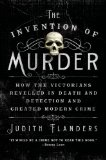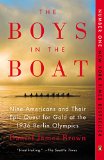Summary | Excerpt | Reading Guide | Reviews | Beyond the book | Read-Alikes | Genres & Themes | Author Bio

Erik Lawson's third book (following Issac's Storm, 1999
and The Devil in the White City, 2003) confirms him as a master of the
art of turning potentially dull history into riveting narrative.
In Issac's Storm he wrote about Isaac Cline, the respected meteorologist
who, in 1891, refuted the public's request for a seawall to protect the city of
Galveston by stating that the idea of a hurricane doing serious harm was "an
absurd delusion". Nine years later Galveston Island was hit by a hurricane
that is still considered the biggest natural disaster in US history, killing
thousands including some of Cline's family.
Larson hit his stride in
The Devil in the White City, by intertwining two true stories that
happened in the same timeframe - one tells of serial killer H.H. Holmes, neatly
pulling in true-crime aficionados; while the other tells of the architectural
triumph and social extravaganza that was the 1893
World's Fair - which lasted 6 months and attracted 27 million visitors.
Murder and architecture proved to be a winning formula, one that kept The
Devil in The White City on the paperback bestseller lists for well over two
years!
In Thunderstruck, Larson again juxtaposes two very loosely connected
stories. The first is that of glamorous workaholic Guglielmo Marconi and
his invention of the wireless. The second, arguably spicier, story is of
poor old Doctor Crippen, who after years of being brow-beaten by an overbearing
wife at last plucks up the courage to do away with her and run away with a
younger woman. He almost gets away with the perfect crime, only to be
apprehended by the ship's captain due to the miracle of Marconi's wireless
technology (we're not giving away anything here, this is spelled out in the
opening pages).
The dual-story that worked so well in The Devil in The White City does
not work quite as well here. The connection between the two halves of
Thunderstruck feel a little strained; while H.H. Holmes committed his
murders against the backdrop of the World's Fair, there are years between
Marconi inventing the wireless and Crippin's undoing at the hands of this
cunning new invention - years that require Larson to jump back and forwards in
time which makes for a slightly awkward read. In addition, occasionally
Larson's digressions in Thunderstruck are just a little too tangential.
Having said that, although not up to the high standard of The Devil in the
White City, Thunderstruck is still a contender for "best in class" when it
comes to setting the standard for popular narrative history. If
you've enjoyed books such as Simon Winchester's The Professor and the Madman,
and of course, The Devil in The White City, you're unlikely to find
yourself disappointed by Thunderstruck.
![]() This review
first ran in the October 4, 2007
issue of BookBrowse Recommends.
This review
first ran in the October 4, 2007
issue of BookBrowse Recommends.

If you liked Thunderstruck, try these:

by Judith Flanders
Published 2014
In this fascinating exploration of murder in the nineteenth century, Judith Flanders examines some of the most gripping cases that captivated the Victorians and gave rise to the first detective fiction.

by Daniel James Brown
Published 2014
For readers of Laura Hillenbrand's Seabiscuit and Unbroken, the dramatic story of the American rowing team that stunned the world at Hitler's 1936 Berlin Olympics
Your guide toexceptional books
BookBrowse seeks out and recommends the best in contemporary fiction and nonfiction—books that not only engage and entertain but also deepen our understanding of ourselves and the world around us.